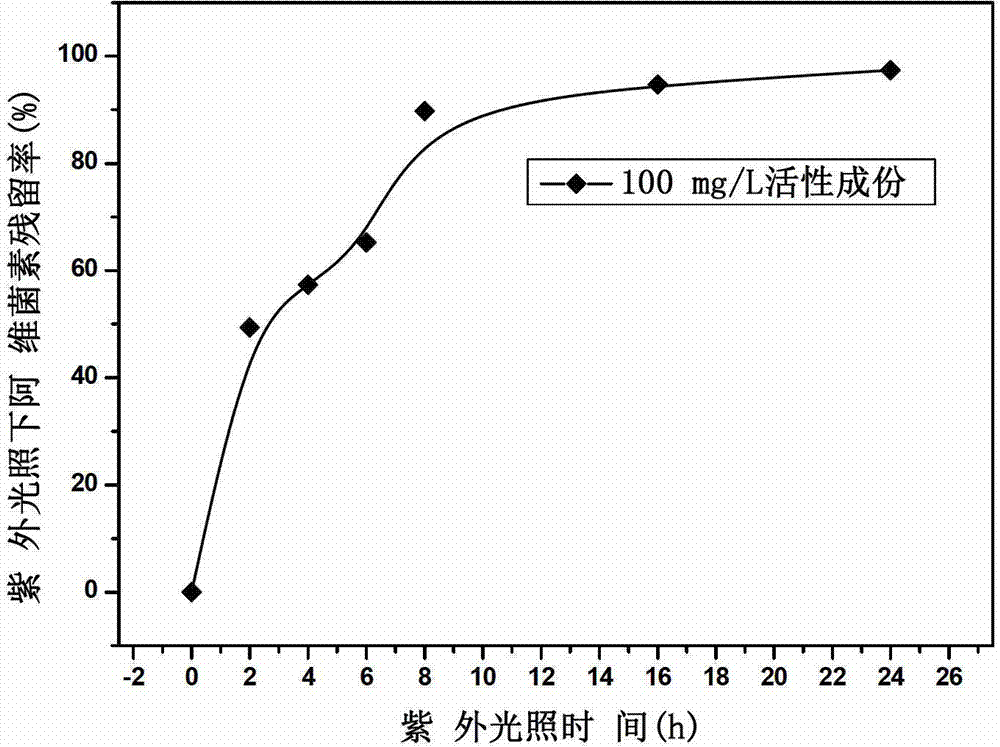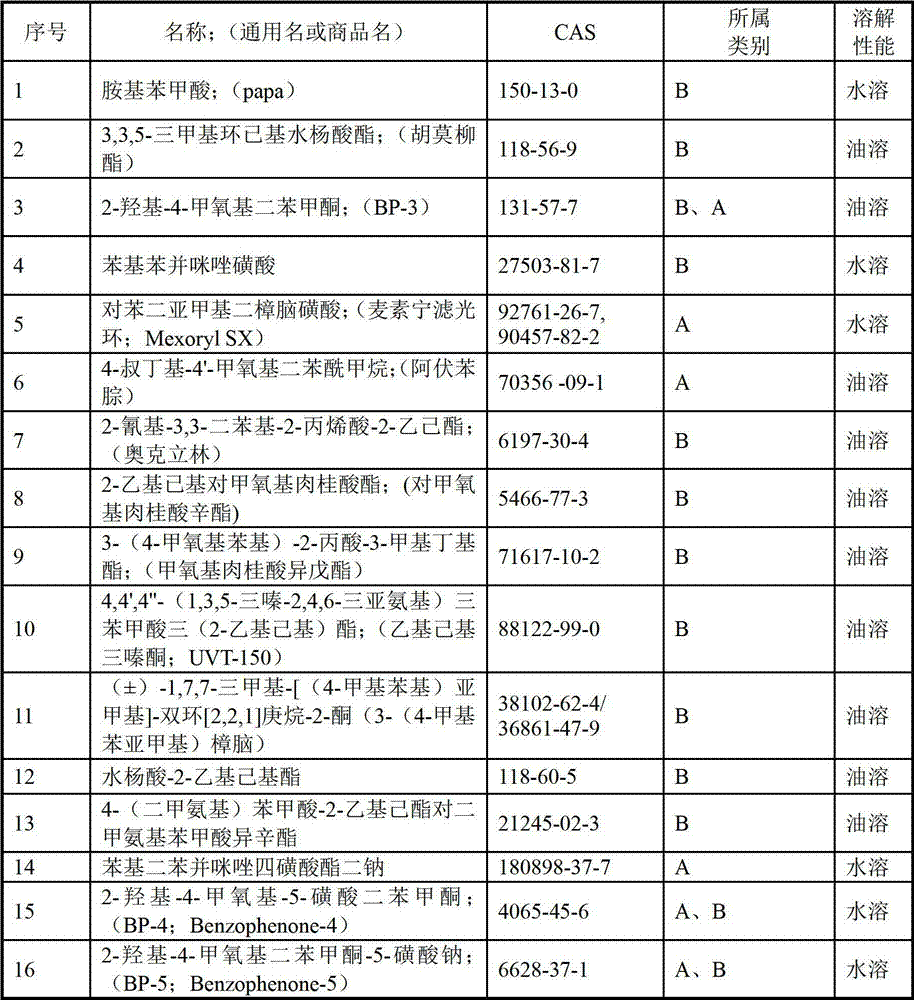Photolysis-resistant pesticide and application thereof
A pesticide and photolysis technology, applied in the field of pesticides, can solve problems such as the improvement of the protective effect of photosensitive pesticides
- Summary
- Abstract
- Description
- Claims
- Application Information
AI Technical Summary
Problems solved by technology
Method used
Image
Examples
Embodiment 1
[0052] Abamectin is recrystallized in methanol, and the content of ABa1 (ABa1 refers to one of the two main components in abamectin) before recrystallization is 81% and 84% after recrystallization, and the recrystallization effect on ABa1 content slightly increased. Prepare Abamectin standard methanol solution, ABa1 content is controlled at 100mg / L. The solution was photolyzed under the irradiation of ultraviolet light (a 18w ultraviolet lamp and a 125w sun lamp). The figure below shows the photolysis of abamectin over time.
[0053] see figure 2 , as can be seen from the figure: Abamectin degrades the fastest in the first two hours, and then relatively tends to ease. As can be seen from the figure, under the light conditions of the above-mentioned experimental conditions, the half-life of Abamectin is 2h. It is shorter than the 4-6 hours reported in the literature, because there are two kinds of lights working together. After 6 hours and 8 hours of light, the residual ra...
Embodiment 2
[0055] The abamectin standard solution prepared in Example 1 was added with the same quality (half of the abamectin quality) 56 ultraviolet absorbers or antioxidants listed in Table 1 and Table 2 respectively. Under the same light conditions as in Example 1, the ABa1 content was detected after 6 hours or 8 hours respectively.
[0056] After adding ultraviolet light absorber, no matter be water-soluble or oil-soluble ultraviolet absorber or antioxidant, can make the half-life of abamectin prolong, what have can extend to 24 hours.
Embodiment 3
[0058] The following are formulations A, B and C of 5% avermectin emulsifiable emulsion anti-photolysis pesticides. Formula A is a control sample without anti-photolysis agent, formula B is added water-soluble UV absorber and oil-soluble UV absorber and antioxidant as described in this example, and only oil-soluble UV absorber is added in formula C Agents UVA and UVB.
[0059] 5% Abamectin Cream Formula A:
[0060]
[0061] 5% Abamectin EC formula B (add the anti-photolysis pesticide ingredients described in this example):
[0062]
[0063]
[0064] 5% Abamectin EC formula C (only add oil-soluble anti-photolysis agent):
[0065]
[0066] Get above three kinds of 5% abamectin emulsifiable concentrate formulas and irradiate 8 hours, 16 hours and 24 hours by the light condition in embodiment 1, irradiate 8 hours and 16 hours again with distilled water dilution 50 times, and dilute 100 times with distilled water Post-irradiate for 8 hours. Sampling was performed af...
PUM
 Login to View More
Login to View More Abstract
Description
Claims
Application Information
 Login to View More
Login to View More - R&D
- Intellectual Property
- Life Sciences
- Materials
- Tech Scout
- Unparalleled Data Quality
- Higher Quality Content
- 60% Fewer Hallucinations
Browse by: Latest US Patents, China's latest patents, Technical Efficacy Thesaurus, Application Domain, Technology Topic, Popular Technical Reports.
© 2025 PatSnap. All rights reserved.Legal|Privacy policy|Modern Slavery Act Transparency Statement|Sitemap|About US| Contact US: help@patsnap.com



